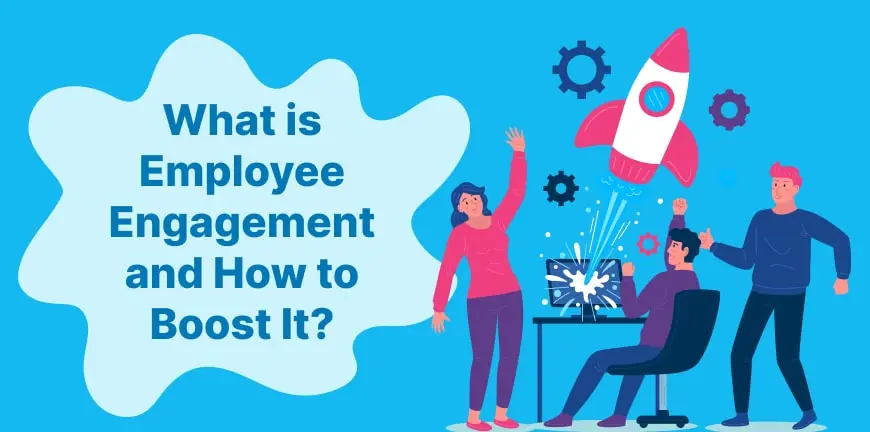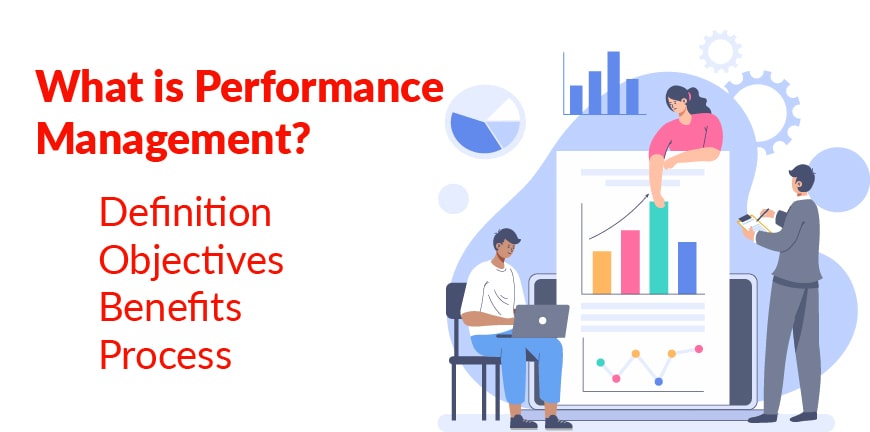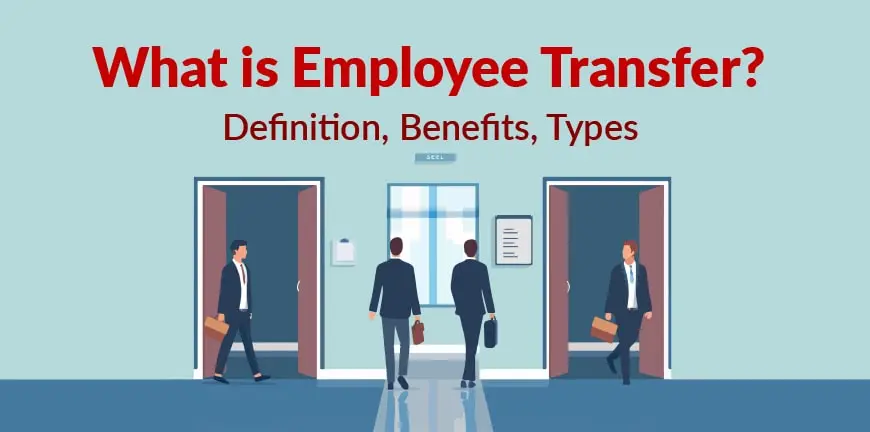
What Is Pay Scale? Definition, Importance, and Factors Explained
21/09/2025
Adapting to Japan’s Work Culture: A Guide for Indian Professionals
22/09/2025- What is Employee Engagement?
- Employee Engagement vs. Employee Satisfaction
- Why Employee Engagement is Important for Businesses
- Key Drivers of Employee Engagement
- What are the Types of Employee Engagement?
- What are the Benefits of High Employee Engagement?
- What are the Signs of Low Employee Engagement?
- Strategies to Boost Employee Engagement
- Employee Engagement Measurement: Metrics and Tools
- Role of HR and Managers in Employee Engagement
- What are the Common Challenges in Driving Engagement?
- Employee Engagement Trends in Modern Workplaces
- Conclusion: Building a Culture of Engagement
- Key Takeaways
- Frequently Asked Questions (FAQs)
“Connect the dots between individual roles and the goals of the organization. When people see that connection, they get a lot of energy out of work.” – Ken Blanchard, Famous American author and business professional.
Employee engagement isn’t just a corporate buzzword; it’s the real driver of workplace energy, productivity, and long-term success. When employees feel truly connected to work, teams, and brand vision, they don’t just show up; instead, they thrive, contribute, and innovate. However, most companies struggle to turn engagement from a concept into a culture. To break this barrier and create lasting employee engagement, we have developed a comprehensive guide that breaks down core aspects related to employee engagement and how they can be improved seamlessly. Let’s Go!
What is Employee Engagement?
Employee engagement captures the complex relationship between organizations and their internal workforce. This fundamental concept shows how strongly employees are invested mentally and emotionally in their organization, team, and work.
Employee engagement runs much deeper than just job satisfaction. Gallup defines it as “the involvement and enthusiasm of employees in their work and workplace”. Employees’ psychological state shows their emotional investment in contributing to organizational success rather than just working for a paycheck.
Engaged employees show these distinctive characteristics consistently:
- Take initiative and exceed expectations.
- Stay with their company longer.
- Deliver superior customer outcomes.
- Work together effectively with teammates.
- Show resilience during stress or change.
Employee engagement shows up in three main dimensions:
1. Physical engagement
Employees see work as an energy source and put in significant effort
2. Emotional engagement
Workers keep a positive outlook with genuine passion
3. Cognitive engagement
People give full attention and become absorbed in their tasks
Employee engagement is different from related concepts. Happiness represents a temporary emotional state, while engagement creates a deep, long-term connection. Also, job satisfaction indicates contentment without inspiring extra effort. On the other hand, engaged employees actively contribute to organizational goals, while satisfied employees might just coast through their duties.
Recent studies show 66% of employees in the Asia-Pacific-Japan region are engaged in their work. Global figures stand at 68%. These metrics give leaders a clear picture of whether their employees are deeply invested or just going through the motions.
Employee engagement works as a critical indicator of workplace health. It reveals whether team-building efforts and human resource strategies create an environment where employees feel valued, involved, and genuinely connected to their organization’s mission.
Employee Engagement vs. Employee Satisfaction
Employee engagement and employee satisfaction might look similar, but they mean different things and affect organizational success in unique ways. Moreover, leaders need to understand these differences to build effective talent management strategies.
Employee satisfaction shows how happy workers are with their jobs and working conditions. A company’s compensation, benefits, work hours, environment, and workplace relationships all play a role. Happy employees might enjoy coming to work and finishing their tasks, but their contentment doesn’t always lead to better performance.
However, employee engagement runs deeper than satisfaction. It’s about the emotional connection employees have with their work and organization. Engaged employees show enthusiasm and commitment to their company’s success. They bring energy and purpose to work each day. These employees don’t just feel content – they actively help achieve company goals.
Action sets these concepts apart. One source explains it well: “While satisfaction is a ‘one-way street’ (what can you do for me), engagement is a ‘two-way street’ (what we can do together, in partnership)”. Satisfied employees keep their feelings internal, while engaged employees demonstrate their commitment through workplace interactions.
These differences matter in business. Companies that focus only on satisfaction might have content workers who don’t push beyond expectations. The numbers tell a different story for businesses that prioritize engagement. They see 43% less turnover in low-turnover organizations, 81% less absenteeism, 64% fewer safety incidents, 10% more customer loyalty, 18% higher productivity in sales, and 23% higher profitability.
Employees can feel satisfied without being engaged. To name just one example, someone might appreciate their pay and company culture but feel disconnected from their work’s purpose. Similarly, an employee might feel passionate about their work’s impact but unhappy with certain conditions.
The best strategy starts with satisfaction as the groundwork for engagement. Organizations that achieve both see amazing results: lower absenteeism, fewer safety incidents, reduced turnover, better product quality, more state-of-the-art ideas, improved customer satisfaction, higher productivity, and greater profitability.
Success needs more than just happy employees. Organizations thrive when they help employees connect with purpose, achieve great performance, and use their strengths every day.
Why Employee Engagement is Important for Businesses
Companies that put their employees first create a powerful competitive advantage in today’s marketplace. Also, senior executives now see employee engagement as a top business priority. They know a high-performing workforce helps them grow and survive.
The numbers tell an impressive story about engagement’s financial rewards. Companies with highly engaged teams are 21% more profitable than those with low engagement. These organizations show higher earnings per share (EPS) and bounce back faster from economic downturns than their competitors. The results speak for themselves: Businesses with engaged workforces double their return on sales compared to bottom-quartile organizations.
Employee engagement boosts productivity remarkably. Sales productivity jumps by 18% while overall productivity increases by 22%. Also, we noticed this happens because engaged employees care about more than just money: they believe in their organization’s mission.
Staff retention gets better, too. Companies with high employee engagement cut their turnover by up to 43%. This matters because replacing an employee costs anywhere from half to double their yearly salary. Additionally, research shows engaged employees are 87% less likely to look for jobs elsewhere.
Customer satisfaction improves when employees care about their work. Organizations with engaged teams see a 10% boost in customer ratings, which leads to 20% higher sales. Also, companies that maintain over 50% employee engagement keep more than 80% of their customers.
The benefits to operations are clear. Companies with high engagement see:
- 81% lower absenteeism
- 70% fewer safety incidents
- 41% fewer quality defects
New ideas and adaptability flourish when employees feel connected. About 8 in 10 highly engaged employees say their companies welcome breakthroughs. The SA Journal of Human Resource Management confirms strong connections between career adaptability and employee engagement.
The cost savings add up quickly. Work stress drains over $300 billion from the U.S. economy each year. Companies with poor engagement earn 32.7% less operating income than those with engaged employees.
The evidence makes a strong case as engagement isn’t just about feeling good; it accelerates real business results. While disengaged workforces cost companies nearly $550 billion yearly in lost productivity, businesses that focus on engagement build stronger, more sustainable companies.
Key Drivers of Employee Engagement
Employee engagement drivers play a significant role in building a thriving workplace. Research shows several basic factors that help employees feel connected to their organizations.
Gallup’s largest longitudinal study points to five key elements that boost engagement. These include purpose, development opportunities, caring managers, ongoing conversations, and focus on strengths. These elements are the foundations of meaningful workplace connections.
Managers affect engagement in remarkable ways. Studies show that team leaders influence about 70% of employee engagement variations. This proves leadership’s vital role in creating environments where employees feel valued and motivated.
Meaningful work serves as a core engagement driver. Employees show higher motivation when their work aligns with personal values. About 89% of workers say meaningful work matters to their job satisfaction.
Companies with good recognition programs see 31% lower voluntary turnover compared to those without them. On top of that, 69% of employees say they would work harder if someone appreciated their efforts.
Career growth opportunities affect engagement a lot. LinkedIn data shows 94% of employees stick with companies that invest in their development. This explains how learning and advancement create lasting commitment.
Work-life balance is another vital factor. Companies that support wellbeing initiatives find 91% of their staff perform at their best. Good balance leads to better output without burnout.
The core team looks at positive culture, clear communication, autonomy, trust in leadership, and psychological safety. Also, organizations that put employee well-being first discover that 89% of their people recommend their workplace.
Engagement doesn’t come from random attempts to make employees happy. Real engagement happens when organizations develop environments where people connect with their work, feel valued, and receive support from leaders.
Organizations that understand these drivers can create focused strategies that encourage authentic engagement instead of using generic programs that don’t deal very well with basic employee needs.
What are the Types of Employee Engagement?
Employee engagement manifests itself in three distinct dimensions that shape how workers connect with their roles, organizations, and colleagues. These dimensions, cognitive, emotional, and behavioral, were first introduced by psychologist William Kahn in 1990. His research showed how employees bring themselves physically, cognitively, and emotionally to their work.
1. Cognitive Engagement
Cognitive engagement represents how much employees invest intellectually in their work. Employees who are cognitively engaged take a thoughtful and strategic approach to their responsibilities. They constantly look for ways to improve and bring state-of-the-art solutions. This engagement creates a deep mental connection where workers understand both what they’re doing and why it matters.
Cognitively engaged employees show these key traits:
- They learn new skills proactively to adapt to evolving needs.
- They analyze data thoroughly to make better decisions.
- They question processes to find opportunities for improvement.
Research published in the International Journal of Training Research confirms that talent-based training and organizational support positively affect cognitive engagement. This ended up improving individual performance. Also, we focused mainly on understanding organizational vision and maintaining a clear awareness of personal goals and expectations.
2. Emotional Engagement
Emotional engagement focuses on the connection employees build with their work, team, and organization. This dimension shows how employees feel about their contributions and workplace relationships. Emotionally engaged employees show real enthusiasm, passion, and pride in their work.
These employees do more than just perform tasks:
- They feel satisfied when working on projects that match their personal values
- They show enthusiasm for team activities and encourage camaraderie
- They put in extra effort because they truly care about results
This connection creates loyalty and improves retention rates as employees feel valued and connected to their work. Leadership is a vital part of this process, as a study of 25,000 leaders revealed that all but one of these leaders who ranked as most inspiring were also the most emotionally engaging.
3. Behavioral Engagement
Behavioral engagement shows through actions that demonstrate commitment. Unlike cognitive and emotional aspects, behavioral engagement focuses on visible actions that show dedication to one’s role and organization.
Behaviorally engaged employees consistently:
- Take on leadership roles and additional responsibilities.
- Participate actively in discussions with constructive ideas.
- Meet deadlines and exceed expectations without constant supervision.
Organizations can measure this type of engagement through productivity metrics, participation levels, and accountability practices. Also, employers bear responsibility for low physical engagement. Workplaces that don’t appreciate or meaningfully reward their employees typically see declining behavioral engagement indicators.
Organizations can develop complete strategies that address all aspects of employee engagement by understanding these three dimensions rather than focusing on just one area.
What are the Benefits of High Employee Engagement?
A highly engaged workforce creates positive effects that ripple through an organization. Gallup’s detailed research shows companies with engaged employees achieve 10% higher customer loyalty and 23% greater profitability than those with disengaged teams. Here are 5 key benefits of high employee engagement:
1. Employee engagement dramatically improves operational efficiency
Companies report 41% lower absenteeism and 78% fewer safety incidents with highly engaged teams. Quality control sees remarkable benefits, too. Also, these organizations have 32% fewer quality defects in their products and services.
2. Engaged environments naturally promote employee wellness
Statistics reveal that engaged employees experience 70% higher well-being, with more staff members reporting they are “net thriving”. Also, staff members who feel engaged tend to exercise, eat well, and sleep better.
3. High engagement levels significantly reduce staff turnover costs
Organizations see 18% to 51% less turnover when their teams are engaged. Replacing an employee costs anywhere from half to double their yearly salary, which makes investing in engagement initiatives worthwhile.
Numbers prove the financial benefits clearly. Engaged workforces deliver up to 18% higher sales productivity and 14% higher overall productivity based on production records and evaluations. Teams that feel engaged generate 20% higher sales and 21% increased profitability.
4. Customer satisfaction soars with engaged employees
Staff members build stronger customer relationships, leading to 10% higher customer ratings. Happy customers drive business growth through repeat purchases and word-of-mouth referrals.
5. Engaged workforces make organizations more resilient during tough times
Studies show these companies bounced back faster from the 2008 recession compared to their competitors. Such resilience gives businesses a crucial edge during economic downturns and market shifts.
Benefits multiply over time, creating lasting competitive advantages that boost success in any industry, regardless of organization size.
What are the Signs of Low Employee Engagement?
Organizations can step in before productivity and morale drop a lot if they spot the warning signs of disengaged employees. The numbers tell a stark story – almost 80% of employees worldwide aren’t engaged or are actively disengaged at work. These indicators have become vital to business success. Here are 6 important signs of low employee engagement.
1. Poor work Quality
Disengaged employees turn in subpar work with obvious mistakes. They miss more deadlines, and their productivity takes a nosedive. Also, the work barely meets basic requirements, lacking any spark of creativity or precision.
2. Social Disengagement
Once enthusiastic team members start pulling away socially. They skip company activities, stay quiet in meetings, and keep their distance from coworkers. This self-imposed isolation shows how mentally checked out they’ve become from their work and the company.
3. Lower Attendance
The attendance record of disengaged staff tells its own story. They call in sick without good reason and show up late regularly. These employees stretch their breaks longer and take them more often. You’ll notice they’re hard to find during work hours. Such behavior reflects their fading interest in work responsibilities.
4. Exhibit Negative Attitude
Negative attitudes become hard to miss. These employees complain about the organization, get irritated easily, make cynical comments, and blow small problems out of proportion. Their negativity spreads like wildfire, dragging down everyone’s motivation.
5. Loss of Interest in Career Growth
Disengaged employees lose all interest in growing professionally. The enthusiasm for learning disappears. They pass up chances to develop and shy away from new challenges or responsibilities. People who once pushed for advancement suddenly stop caring about their careers.
6. Addiction to Social Media
Digital habits give away disengagement, too. These employees constantly scroll through their phones, waste time openly, and barely collaborate online during remote work. These behaviors signal they’ve mentally checked out before physically leaving.
Disengaged employees ended up costing organizations about $550 billion yearly in lost productivity. Leaders who catch these warning signs early can tackle why it happens before small issues grow into major organizational problems.
Strategies to Boost Employee Engagement
Organizations need thoughtful strategies to boost employee engagement and address basic workplace needs. A well-designed workplace environment helps employees thrive and deliver their best work. Here are a few proven strategies to improve employee engagement.
1. Communication and Feedback
Effective communication serves as the cornerstone of engagement. Organizations should schedule regular one-on-one meetings between managers and employees. These meetings create an open dialogue where team members can voice their opinions freely. Additionally, anonymous pulse surveys throughout the year help leadership spot areas needing improvement. Moreover, managers should explain how workplace engagement ties to organizational success. This helps employees understand the value of their work.
2. Recognition and Rewards
Companies with recognition programs see 31% lower voluntary turnover than those without them. Also, recognition should be a regular agenda item to show appreciation for unique contributions. Good recognition programs include three types: peer-to-peer, leader-to-team-member, and employer-to-employee. The timing of recognition also matters a lot. The managers should acknowledge great work right away instead of waiting for formal reviews.
3. Career Growth and Development
Companies offering career development programs report 50% higher employee engagement scores. Professional growth benefits both individual careers and organizational success. Moreover, mentorship programs can boost engagement by 57%. Internal mobility lets employees explore new paths within the organization. One company saw a 30% engagement increase after launching an internal career program.
4. Work-Life Balance
A healthy work-life balance leads to better productivity and well-being. Research shows that work-life balance programs improve productivity and employee health. These programs also help increase organizational diversity. Also, employees who maintain a good work-life balance show greater mental and emotional engagement at work.
5. Leadership and Management Support
Managers can influence up to 70% of employee engagement levels. Leaders should focus on strengths-based development and encourage employees to use their best skills daily. Also, good managers champion their employees’ ideas by asking for input during meetings and acting on suggestions. Each team member needs individual attention based on their preferences. This approach creates deeper connections and commitment.
Employee Engagement Measurement: Metrics and Tools
Tracking employee engagement needs more than just data collection. Companies must ask the right questions and turn their findings into concrete actions. Also, organizations that monitor engagement get useful information about workplace health and how their employees feel.
1. The right metrics make all the difference in measurement
Employee turnover and retention numbers clearly show engagement levels. Companies with highly engaged workers see up to 43% lower turnover. Absence rates tell a similar story – engaged companies report 41% lower absenteeism. Internal job moves and training participation show whether employees see chances to grow within the company.
2. Surveys still play a key role in measuring engagement
Yearly surveys that give a full picture usually include 30-50 questions across the company. Pulse surveys sent monthly or quarterly help track immediate engagement changes without survey fatigue. Many companies also use the Employee Net Promoter Score (eNPS) to measure how likely their staff would recommend them as employers.
3. The 12-year-old measurement frameworks offer well-laid-out approaches
Gallup’s Q12 survey looks at 12 elements that link directly to performance. These include clear expectations, access to resources, and daily chances to use strengths. The Utrecht Work Engagement Scale gives another verified option. It uses three items to measure energy (“At my work, I feel bursting with energy”), dedication (“I am enthusiastic about my job”), and focus (“I am immersed in my job”).
4. Behavioral data gives extra valuable insights beyond surveys
Customer satisfaction often lies with engagement levels because engaged employees create better customer experiences. Performance and quality metrics also show how engagement affects outcomes.
5. Good measurement connects data to action
The best engagement metrics help managers coach better, launch follow-up programs, and improve workplaces instead of just collecting numbers.
Role of HR and Managers in Employee Engagement
Employee involvement serves as the lifeblood of successful workplace cultures. People often view it as an HR initiative, but real success comes when every organizational level takes ownership.
1. Managers Directly Impact Employee Engagement
Managers shape engagement outcomes directly. Studies show they influence 70% of the variance in team engagement levels. This remarkable finding proves why good leadership matters—managers shape their employees’ experience through everyday interactions. These frontline leaders help team members understand what they need to do. They provide support and show how individual work contributes to company success.
2. HR Team Increases Employee Involvement
HR teams handle involvement across many functions. They create talent management strategies, design strong onboarding programs, and build development opportunities that challenge employees. Their role includes managing performance reviews, ensuring fair pay, and building open communication channels where staff feel safe to voice concerns. These activities build the framework that helps involvement grow.
3. Execute Leaders Set the Bar
Leadership at the executive level sets the tone for involvement throughout the company. Executives shape the vision and model positive behaviors. They create conditions that help managers and employees develop an engagement mindset. Without their steadfast dedication, even excellent initiatives fail quickly.
Employees play their part by expressing their needs and taking charge of their workplace experience. This approach at multiple levels builds lasting positive work environments.
Managers can optimize involvement by:
- Making time for meaningful team conversations.
- Giving personal recognition for individual work.
- Changing leadership style based on work settings.
- Supporting each team member’s unique strengths and needs.
Since involvement doesn’t naturally flow downward, companies need routines that strengthen engagement at every level. Clear ownership and teamwork across departments help create engagement cultures that bring lasting business results.
What are the Common Challenges in Driving Engagement?
Organizations still face ongoing challenges in building employee engagement, despite better awareness of its value. Companies often treat engagement as “an HR thing” instead of a shared responsibility. This mindset leaves almost 80% of employees worldwide either not engaged or actively disengaged.
1. Lack of Leadership
Leadership’s lack of ownership causes most engagement strategies to fail. Employees quickly see the disconnect when their leaders don’t prioritize or model engagement. Companies also make things harder by focusing on factors beyond managers’ control rather than addressing basic psychological needs.
2. Misleading Metrics
Misleading metrics create additional problems. Many organizations’ “percent favorable” measurements make results look better than they are. This creates dangerous blind spots where engagement scores appear high without matching performance results.
3. Survey Outcomes are not turned into Action
The gap between surveys and action tells the real story. Companies keep using pulse surveys but don’t follow through with changes. Employees lose trust when they give feedback that doesn’t lead to real improvements.
Several other barriers hold organizations back. Poor communication systems, limited career paths, lack of recognition, and toxic workplace elements all play a role. These challenges will continue to hurt employee experience and organizational performance until companies make engagement part of their core business strategy.
Employee Engagement Trends in Modern Workplaces
Recent years have brought major changes to how companies connect with their employees. The workplace has transformed due to new technology and changing workforce demographics. Companies now face unique challenges to stay connected with their teams.
1. Demographics play a crucial role in reshaping employee engagement.
Studies show millennials and Gen Z will make up 58% of the workforce by 2028. These younger employees strongly prefer remote work, with 90% favoring this option. Companies must now create tailored strategies that work for five different generations in the same workplace.
2. Technology has revolutionized how organizations engage with their teams
Modern AI tools analyze employee data to spot trends and predict when someone might become disengaged. Teams stay connected through digital platforms like Slack and Zoom, which help bridge gaps, whatever their location.
3. Employee well-being now extends beyond physical health
A striking 81% of workers say their future job choices depend on how employers support mental health. Modern leadership styles emphasize empathy, and the results speak for themselves. Companies with high trust levels see 50% better productivity and 76% higher engagement.
4. Global statistics paint an interesting picture
Worldwide employee engagement sits at just 23% in 2022. However, recognized employees are four times more likely to stay engaged and 56% less likely to look for new jobs.
Conclusion: Building a Culture of Engagement
Employee engagement is the heartbeat of organizational success, shaping productivity, customer loyalty, and workplace culture. True engagement goes beyond surface satisfaction; it connects employees cognitively, emotionally, and behaviorally with their work.
When people feel valued, recognized, and supported, they bring out their best. Organizations that nurture purpose, growth, and balance unlock stronger teams and sustainable success. At Alp Consulting, we provide tailored employee engagement solutions that empower businesses to create meaningful connections and thriving workplace cultures.
Key Takeaways
- Employee engagement drives business success by boosting productivity, profitability, retention, and overall organizational performance.
- Managers significantly influence engagement, with leadership development crucial for creating motivated, high-performing teams.
- Recognition reduces turnover and inspires employees to contribute more effectively toward business goals.
- Effective engagement strategies address cognitive, emotional, and behavioral connections for meaningful workplace involvement.
- Measuring engagement through surveys and acting on insights ensures continuous improvement and employee satisfaction.
Frequently Asked Questions (FAQs)
1. What are the key elements of employee engagement?
Employee engagement comprises several key elements, including strong leadership, meaningful work, growth opportunities, recognition, work-life balance, and a positive organizational culture. These factors contribute to employees feeling emotionally and mentally connected to their work and organization.
2. How does employee engagement differ from job satisfaction?
While job satisfaction refers to contentment with work conditions, employee engagement goes deeper. Also, engaged employees are emotionally invested in their work, proactively contribute to organizational goals, and demonstrate enthusiasm beyond mere satisfaction.
3. What are effective strategies to boost employee engagement?
Effective strategies to elevate employee engagement include improving communication and feedback channels, implementing recognition programs, providing career development opportunities, supporting work-life balance, and enhancing leadership skills.
4. How can organizations measure employee engagement?
Organizations can measure employee engagement through various methods, including annual comprehensive surveys, regular pulse surveys, employee Net Promoter Scores (eNPS), and analyzing behavioral data like turnover rates, absenteeism, and productivity metrics.
5. What role do managers play in employee engagement?
Managers are responsible for setting clear expectations, providing regular feedback, recognizing contributions, supporting employee growth, and creating an environment where team members feel valued and connected to the organization’s mission.
6. How does employee engagement impact business performance?
Engaged employees enhance profitability, productivity, innovation, customer loyalty, and retention, creating lasting competitive advantage and strong organizational performance outcomes.
7. How can technology support employee engagement?
Technology enhances engagement with digital recognition platforms, collaboration tools, learning systems, real-time feedback apps, and data-driven insights for continuous improvement.
8. What challenges do organizations face in sustaining engagement?
Challenges in sustaining employee engagement include changing workforce demographics, inconsistent leadership, limited recognition, lack of career growth, and poor communication.
Contact Us For Business Enquiry

Rajkumar Shanmugam
Rajkumar Shanmugam is the Head of HR at ALP Consulting, bringing over 19 years of comprehensive HR leadership experience across India and international markets. His expertise spans talent acquisition, employee relations, performance management, compliance, and HR transformation. Rajkumar has a proven track record of driving people-centric initiatives, enhancing workplace culture, and aligning HR strategy with business goals. With extensive experience in US staffing operations and global mobility, he continues to lead organizational excellence through innovation and employee engagement.




